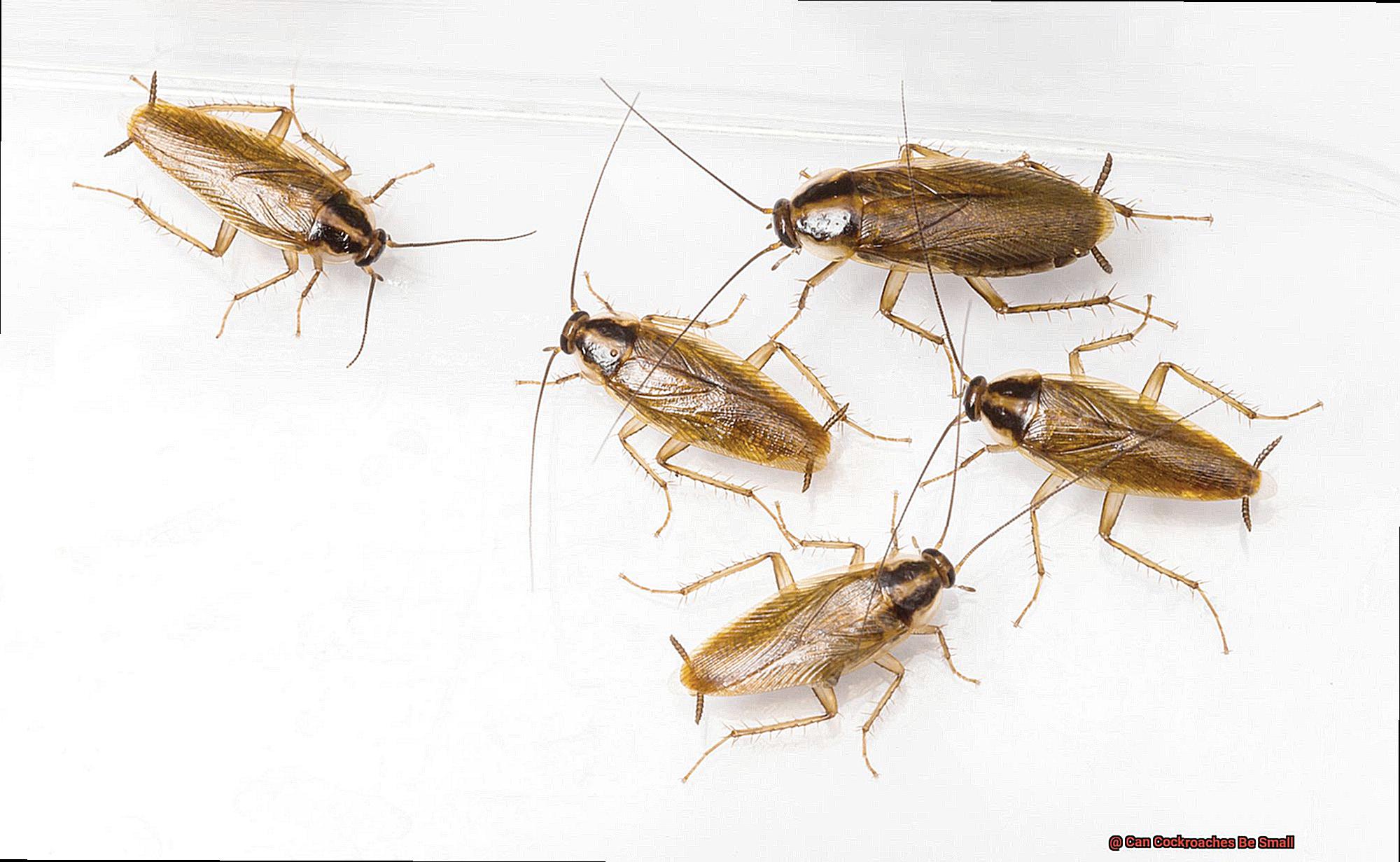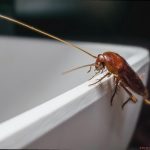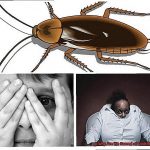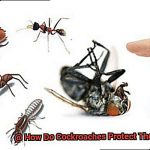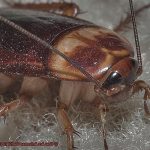Do you shudder at the thought of cockroaches?
It’s no secret that these creepy crawlies can send chills down your spine. But have you ever wondered if all cockroaches are created equal in size?
Can cockroaches be small? The answer is a resounding yes, and it may surprise you to learn just how tiny some of these pests can be.
Cockroaches are one of the most common household nuisances, and they come in all shapes and sizes. While the average species measures between 1-2 inches long, there are dozens of other types that range from mere millimeters to several inches in length.
So, whether you’ve spotted a petite roach scurrying across your kitchen floor or are simply curious about their size diversity, read on to discover more about these pesky critters. Don’t let their diminutive stature fool you, though.
Even the smallest roaches can pose serious health risks by spreading germs and triggering allergies. And with over 4,000 known species worldwide, it’s worth learning about the different types that might invade your home.
So, buckle up and prepare to delve into the fascinating (and sometimes unsettling) world of cockroach variety.
Types of Cockroaches
Contents
Cockroaches are a fascinating and resilient species that come in a variety of sizes, colors, and species.
In this section, we will delve into the different types of cockroaches that exist and discuss their characteristics. First on our list is the German cockroach, the most common type found in households.
These small pests measure about 1.1 to 1.6 cm in length and have light brown bodies with two dark stripes on their back. They are speedy breeders and thrive in warm, humid environments such as kitchens and bathrooms.
Next up is the American cockroach, one of the largest species at up to 4 cm in length. They have reddish-brown bodies with a yellowish figure-eight pattern on their head and prefer dark, warm, and moist areas like basements, sewers, and drains.
While they can fly short distances, they prefer to run. Oriental cockroaches are medium-sized at about 2.5 cm in length and have a shiny appearance with dark brown or black coloration.
They prefer cool, damp areas like basements, crawl spaces, and drains but aren’t good climbers and can’t fly. Brown-banded cockroaches are smaller than German cockroaches at about 1 cm in length.
They have light brown bodies with two distinct bands across their wings and prefer warm, dry environments such as bedrooms and living rooms. These pests are strong climbers and can infest upper floors of buildings.
Finally, the smokybrown cockroach is a large species measuring up to 3 cm in length with a uniform mahogany coloration and wings that extend beyond their body. They prefer outdoor environments like trees, woodpiles, and shrubs but can also be found indoors in attics and basements.
Identifying the type of cockroach infesting your home can help you take appropriate measures to control them effectively.
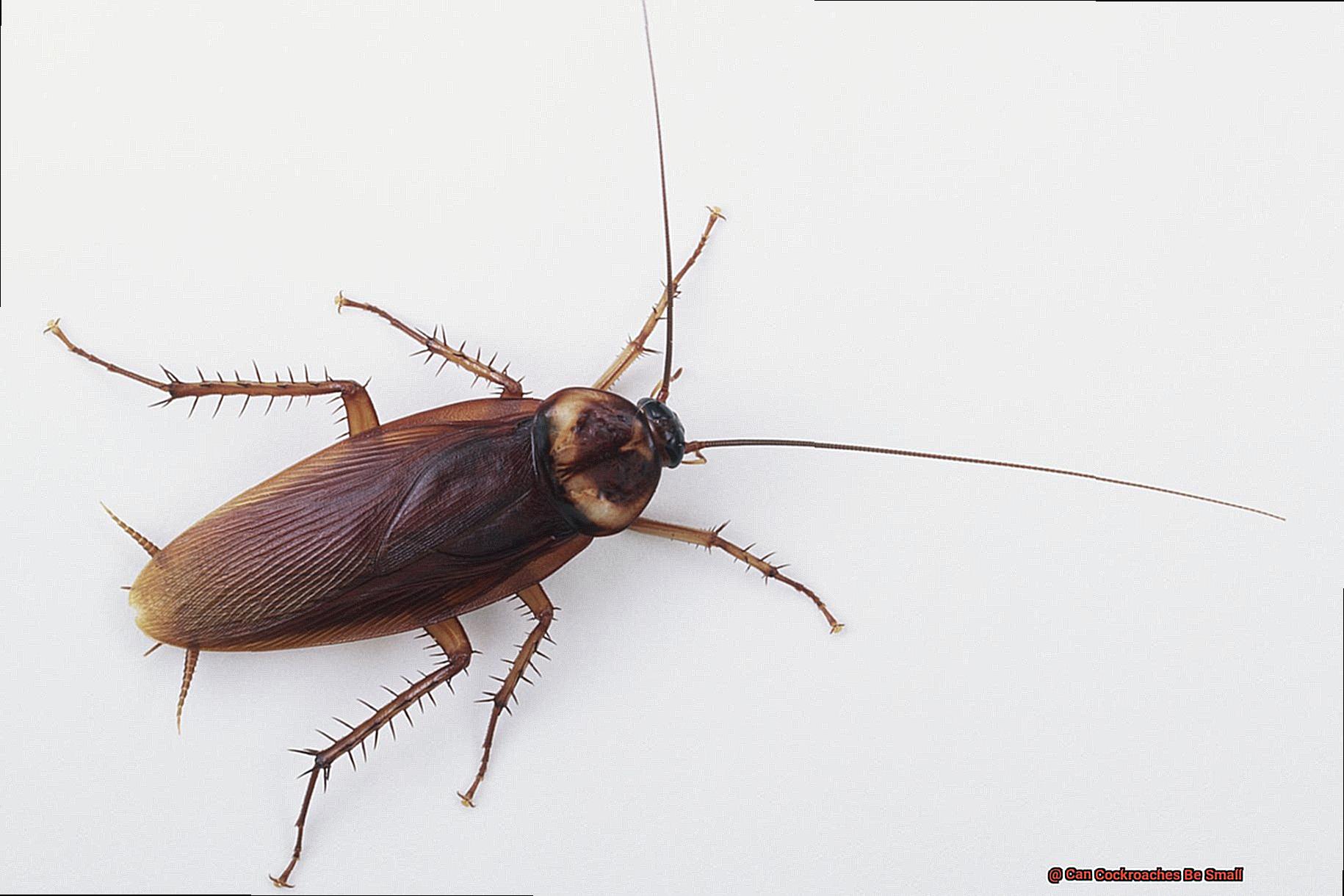
Factors that Affect Cockroach Size
These household pests come in all shapes and sizes, from tiny rice-grain-sized to massive 4-inch creatures.
But what factors determine their size? Here are the key factors that affect cockroach size.
Firstly, genetics play a significant role. Different species have different genetic makeups that determine their size and shape.
For instance, German cockroaches are naturally smaller than the American cockroach, which is larger. Secondly, environmental conditions also affect cockroach size.
These pests require warm and humid environments to survive. If they don’t get enough moisture or warmth, they will grow smaller.
Conversely, if they have access to plenty of food and water and warm temperatures with high humidity levels, they will grow larger. Lastly, diet is an essential factor in determining cockroach size.
These scavengers will eat anything they can find, including food scraps, garbage, and even other insects. If they have access to a varied and nutritious diet, they will grow larger than if they are forced to feed on low-quality food sources.
Now that we understand the factors that affect cockroach size let’s see how you can prevent infestations. By creating a clean living space with limited access to food and water sources, homeowners can discourage cockroaches from taking up residence in their homes and keep them from growing too large.
Are Small Cockroaches a Problem?
Small cockroaches, also known as German cockroaches, may seem like a minor annoyance, but don’t be fooled by their tiny size and light brown color.

They can quickly become a major problem for homeowners, and in this article, we will explore why they are such a nuisance and provide tips on how to prevent and eliminate infestations. One of the biggest issues with German cockroaches is their ability to hide.
These pests are experts at squeezing into small cracks and crevices, making it difficult to spot an infestation until it’s too late. What’s more, female German cockroaches can produce up to six egg cases each containing 30-40 eggs in their lifetime, which means that even a small infestation can quickly turn into a full-blown invasion.
But it’s not just the rapid reproduction that makes small cockroaches a problem. They can also pose health risks.
These pests are known carriers of bacteria and diseases that can cause food poisoning, diarrhea, and other illnesses. Even their droppings and shed skins can trigger allergies and asthma symptoms in sensitive individuals.
To prevent small cockroach infestations, homeowners should take prompt action. The first step is to eliminate potential food and water sources.
Cockroaches require sustenance to survive, so keeping your home clean and dry is key. Make sure to store food in sealed containers and promptly clean up any spills or crumbs.
Additionally, seal up any cracks or crevices where cockroaches may be entering your home. When it comes to eliminating small cockroach infestations, insecticide sprays or baits are the most effective methods.
But be sure to use these products safely and according to the manufacturer’s instructions to avoid any health risks to you or your pets. In summary, don’t underestimate the potential problems that even small cockroaches can cause.
To protect your health and home from these pesky pests, take steps to prevent infestations by keeping your home clean and dry, sealing up any cracks or crevices, and using insecticides safely and effectively.
How to Identify Different Types of Cockroaches
Cockroaches are not only unsightly, but they can also pose a serious health hazard to you and your family. Identifying the type of cockroach infesting your home is the first step in effectively controlling them. In this article, we’ll explore how to identify different types of cockroaches and provide tips on effective ways to eliminate them.
German Cockroach
The German cockroach is one of the most common species of cockroach found in homes. They are small, ranging from 1/2 to 5/8 inch in length, with a light brown color and two parallel stripes running down their back. German cockroaches are known for their rapid reproduction rate, making them difficult to control.
American Cockroach
The American cockroach is one of the largest species of cockroach, growing up to 2 inches in length. They are reddish-brown in color with a pale-yellow band around the edge of their head. These pests prefer warm and moist environments such as sewers, basements, and crawl spaces.
Oriental Cockroach
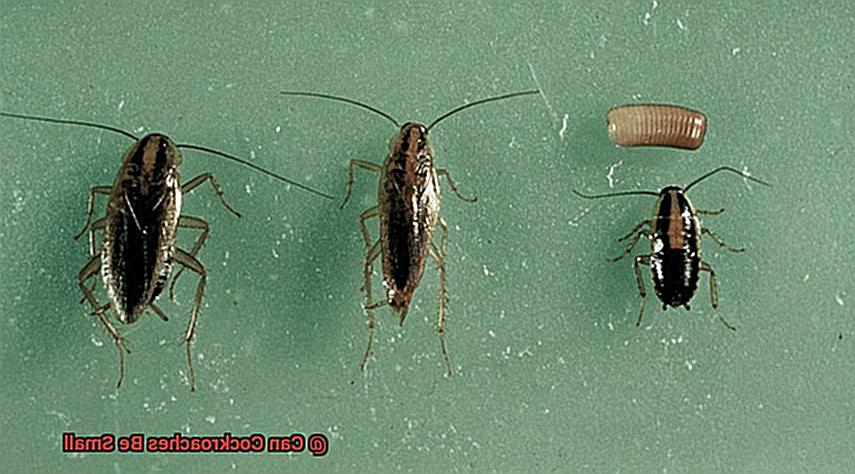
Oriental cockroaches are also known as water bugs because they tend to be found near water sources such as drains, sewers, and leaky pipes. They are shiny black or dark brown in color and can grow up to 1 1/4 inches in length.
Brown-Banded Cockroach
The brown-banded cockroach is smaller than German cockroaches, only growing up to 1/2 inch in length. They have a light brown or tan color with two distinct lighter bands across their wings. Brown-banded cockroaches prefer warmer temperatures and drier environments.
When identifying different types of cockroaches, it’s essential to take note of their physical characteristics such as size, color, and shape. However, there are other factors that you should consider as well.
For instance, observing the behavior of the insect such as whether it flies or crawls can give you important clues as to its species. Additionally, taking note of where you see these pests can provide insights into their preferred habitats.
Now that you know how to differentiate between different types of cockroaches let’s discuss how to eliminate them from your home effectively.
The most effective way to control a cockroach infestation is by using targeted methods such as baiting or insecticides. You can use bait stations that are specific to the species you’re targeting or apply insecticides directly to areas where they congregate.
It’s crucial to take action quickly when dealing with a cockroach infestation since they carry diseases and allergens that can harm your health. Don’t hesitate to contact professional pest control services if you’re dealing with an extensive infestation.
How to Get Rid of Small Cockroaches
Small cockroaches are a common household pest that can be difficult to get rid of. These little critters are sneaky and can quickly multiply, causing damage to your property and posing a potential health hazard. However, with some simple steps, you can eliminate these pests from your home. Here are 5 effective ways to get rid of small cockroaches:
Identify the Source of Infestation
The first step in getting rid of small cockroaches is to identify the source of the infestation. Look for areas where they may be hiding, such as cracks in walls or floors, behind appliances, or in cabinets. Once you have found their hiding spot, clean the area thoroughly with soap and water to remove any food or debris that may be attracting the cockroaches. It’s like playing detective and solving a mystery.
Use Cockroach Bait or Traps
Cockroach bait or traps are an effective way to lure the cockroaches into a sticky or poisoned area. You can find them at most hardware stores and they work well on small cockroaches. Place them in areas where you have seen the most activity, such as near the kitchen or bathroom. Think of it like setting a trap for a sneaky thief.
Insecticide Spray
Insecticide sprays specifically designed for cockroaches can also be effective in eliminating these pests from your home. Be sure to read and follow the instructions on the label carefully to avoid any potential hazards. Wear gloves and protective clothing when applying the spray, and ventilate the area well. It’s like going to battle with an enemy.

Prevention is Key
Prevention is key in keeping small cockroaches out of your home. Keep all food stored in tightly sealed containers and clean up spills immediately. Regularly vacuum and sweep floors and wipe down countertops to eliminate any potential food sources for the cockroaches. It’s like building a fortress against invaders.
Call Professional Pest Control Service
If all else fails, consider calling a professional pest control service if the infestation persists despite your efforts. They can provide more advanced methods of extermination and ensure that the cockroaches are completely eliminated from your home. Think of it like calling in reinforcements when you need extra help.
In conclusion, getting rid of small cockroaches requires persistence and diligence in keeping your home clean and free of food sources. Using bait stations, insecticides, or natural methods like diatomaceous earth can also help eliminate these pests from your home.
Prevention Tips for Keeping Small Cockroaches Away
Small cockroaches are a nuisance, and their presence in your home can cause significant damage to your health and property. Keeping these little creatures away from your living space is essential, but it can be challenging. That’s why we’ve compiled a list of five prevention tips that can help you keep small cockroaches at bay.
Keep Your Kitchen Clean
Cockroaches are attracted to food debris, so keeping your kitchen clean is essential. Make sure to wipe down counters, clean dishes promptly, and sweep regularly. You should also avoid leaving dirty dishes in the sink overnight and ensure that your trash cans are tightly sealed.
Eliminate Sources of Water
Small cockroaches need water to survive, so it’s vital to eliminate any sources of standing water in your home. Fix leaky pipes and faucets, and make sure to dry out your sink and shower after use. A dehumidifier can also help reduce moisture levels in your home.
Seal up Cracks and Crevices
Cockroaches can crawl through tiny gaps and holes, so it’s important to seal up any openings in walls, floors, and windows using caulk or weatherstripping. This will prevent them from entering your living space and infesting your home.
Store Food Properly
Cockroaches are attracted to food sources, so it’s crucial to store food properly in sealed containers. This includes dry goods like cereal and crackers as well as perishable items like fruits and vegetables. Make sure to keep your kitchen pantry clean and free of clutter, which can attract cockroaches.
Take Out the Trash Regularly
Make sure to take out the trash regularly and keep your garbage bin tightly sealed. Cockroaches can be attracted to the smell of rotting food, so it’s important to dispose of your trash properly. You should also avoid leaving any food scraps or crumbs on the floor or in the sink.
Also Read: How to Get Rid of Small Roaches in Your House?
Conclusion
In conclusion, the answer to the question “Can cockroaches be small?”
The answer is a resounding yes. These creepy crawlers come in all shapes and sizes, ranging from minuscule millimeters to several inches in length.
The most common household pest is the German cockroach, measuring between 1/2 to 5/8 inch in length. However, don’t let their size fool you – even small cockroaches can pose serious health risks by spreading germs and triggering allergies.
Identifying the type of cockroach infesting your home is crucial in effectively controlling them. Cockroach size can be affected by genetics, environmental conditions, and diet.
To prevent infestations and keep these pests from growing too large, it’s important for homeowners to create a clean living space with limited access to food and water sources. Getting rid of small cockroaches requires persistence and diligence in keeping your home clean and free of food sources.
Preventing small cockroaches from invading your home involves keeping your kitchen clean, eliminating sources of water, sealing up cracks and crevices, storing food properly, and taking out the trash regularly.

